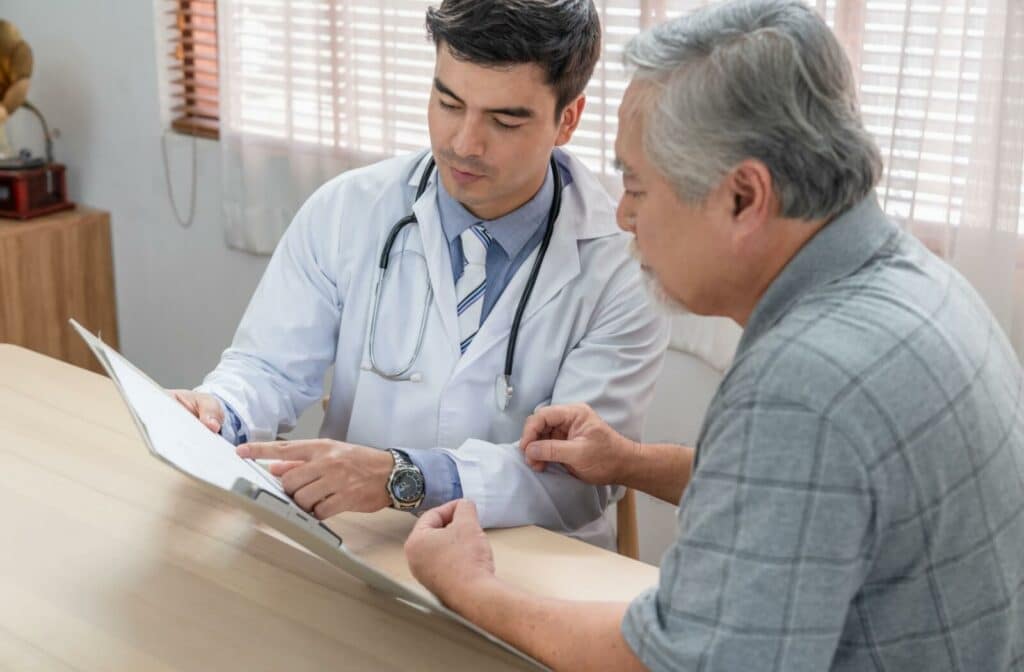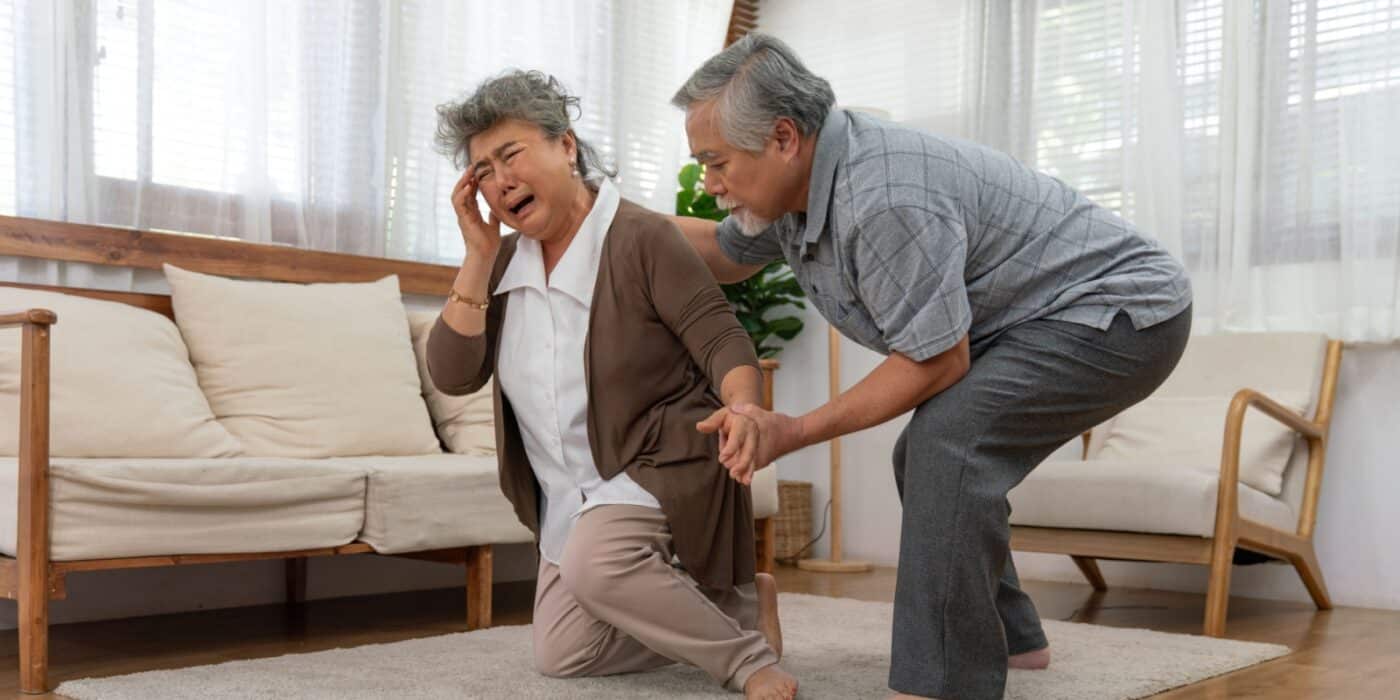Falls are one of the most common—and preventable—causes of injury among older adults.
While many people think of aging in place as the safest option, the truth is that most private homes aren’t designed with mobility and emergency response in mind. Assisted living communities offer a safer, more supportive alternative where older adults can enjoy their independence while minimizing fall risks.
In a thoughtfully designed environment with built-in accessibility, daily movement opportunities, and 24/7 support, residents can move confidently through their day—without sacrificing freedom.
Why Falls Are So Common Among Older Adults
As we age, our risk of falling increases due to a combination of physical changes, chronic conditions, and medication side effects. A fall that might cause only a bruise in younger years can lead to serious injuries, extended hospital stays, and long-term decline in older adults.
This makes falls the number one cause of injury for older adults, with statistics showing that more than one in four people age 65 years or older fall each year.
Beyond physical harm, the fear of falling often leads to reduced activity levels. Unfortunately, inactivity causes muscle loss and balance issues, further increasing the risk of falling. It becomes a cycle that’s hard to break without the right support.
That’s why fall prevention isn’t just about removing tripping hazards—it’s about creating an environment where older adults feel safe, supported, and encouraged to stay active.
What Makes Assisted Living a Safer Choice?
Assisted living communities are designed with safety at the core, offering several key advantages over aging at home.
24/7 On-Site Care
Trained team members are always available to help with daily activities, respond to emergencies, and provide personalized support. Whether someone needs help with mobility, dressing, or medication management, they’re never left waiting or alone.
This continuous presence is one of the most powerful fall-prevention tools available—because even if a fall happens, help is always just moments away.
Safe, Accessible Environments
Apartments and community spaces are built to support mobility and reduce hazards. Features commonly include:
- Grab bars in bathrooms
- Non-slip flooring throughout the building
- Wide hallways and open layouts
- Emergency response systems in living areas
- Sensor or night lighting for safer nighttime movement
These features help residents navigate their spaces confidently and safely.
Encouragement to Stay Active
Staying active strengthens muscles, improves balance, and boosts confidence—all critical to preventing falls. In an assisted living setting, movement isn’t just encouraged—it’s integrated into the rhythm of daily life.
Whether through walking clubs, gentle exercise classes, or chair yoga, there are opportunities to stay physically engaged every day. This regular activity helps residents maintain stability and reduce the likelihood of falls.
Nutrition That Supports Fall Prevention
What we eat can also play a big role in preventing falls. Protein is important for muscle strength, while calcium and vitamin D help keep bones strong. Dehydration, too, can lead to dizziness or weakness.
Communities that provide fresh, well-balanced meals give residents access to the nutrients they need to stay strong. When dining becomes a social experience as well as a source of nourishment, older adults are more likely to eat regularly and maintain healthy habits.
Personalized Health Monitoring
Many falls occur because of subtle changes in health—changes that may go unnoticed in a private home. Assisted living staff monitor residents closely, often identifying shifts in gait, medication side effects, or new symptoms early.
These early observations allow caregivers to adjust care plans, request therapy assessments, or coordinate follow-ups with healthcare providers. Proactive care reduces the chance of sudden incidents and keeps residents safe as their needs evolve.

Small Details That Make a Big Difference
Communities committed to fall prevention often go beyond the basics, addressing the small things that add up to big improvements in safety.
Organized, Clutter-Free Living Spaces
Rooms are arranged to prioritize open movement and easy navigation. Staff work with residents to reduce trip hazards like loose rugs, exposed cords, or overcrowded furniture.
Supportive Footwear
Residents are encouraged to wear supportive, non-slip shoes daily. Staff may provide guidance during move-in and conduct routine check-ins to ensure footwear remains appropriate and in good condition.
Strategic Lighting
Proper lighting reduces disorientation, especially at night. Motion-activated lighting in bathrooms and hallways helps residents move around without fumbling in the dark.
Physical Therapy & Fall Assessments
Some communities offer on-site therapy or partner with specialists to assess fall risk and recommend personalized exercises. Even a few minutes a day of targeted movement can improve balance and coordination.
The Emotional Side of Fall Prevention
The psychological impact of falling—or worrying about falling—can’t be overlooked. Many older adults who have fallen in the past begin to fear it happening again. That fear can lead to avoidance of physical activity and even social isolation.
Assisted living environments help shift that mindset. When residents feel safe, supported, and surrounded by people who are paying attention, they’re more likely to re-engage with daily routines, hobbies, and exercise. Over time, this builds confidence and reduces both the actual and perceived risk of falling.
Creating a Community That Supports Wellness
Fall prevention isn’t an isolated goal—it’s part of a bigger commitment to wellness and vibrant living. In communities that truly prioritize safety, fall prevention is integrated into all aspects of care and daily life.
This includes everything from fitness classes and on-site therapy to fun, purposeful social events that keep the mind and body engaged. The result is a lifestyle that encourages movement, connection, and long-term well-being.
Ready to Explore a Safer Option?
Moving into an assisted living community can feel like a big decision—but it can also be the beginning of a safer, more supported lifestyle. With an accessible environment, on-site wellness programs, and around-the-clock care, residents gain more than just peace of mind—they gain the confidence to keep living fully.
At Norbella Rogers, a Lifespark Senior Living community, fall prevention is just one way we help residents live well. From fresh meals and birthday celebrations to backyard barbecues, puzzle games, and meaningful outings, our community is built to support the whole person.
Schedule a tour today or speak to our team about how we help make aging safer, more social, and more enjoyable.

